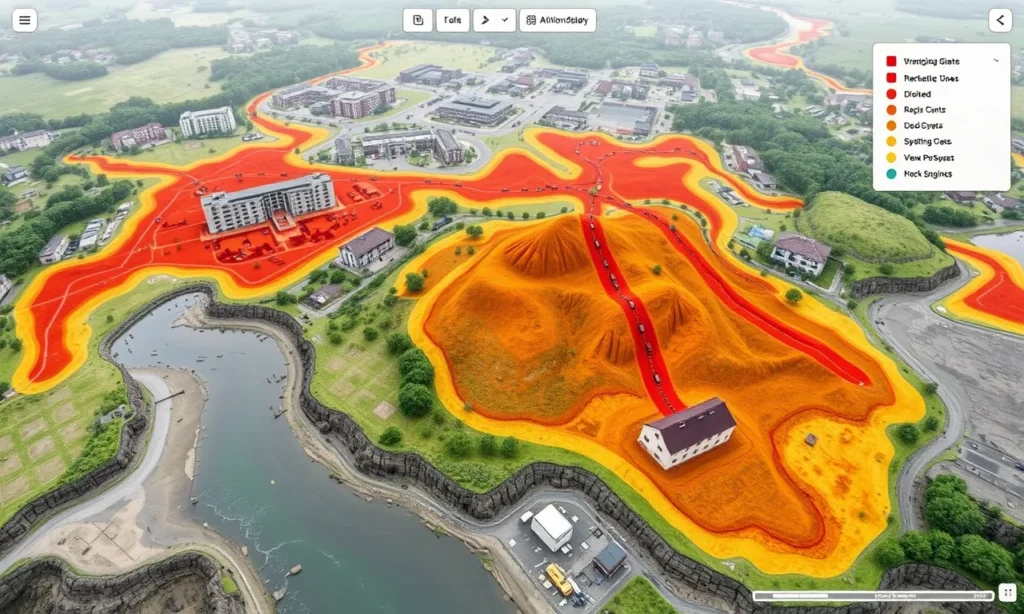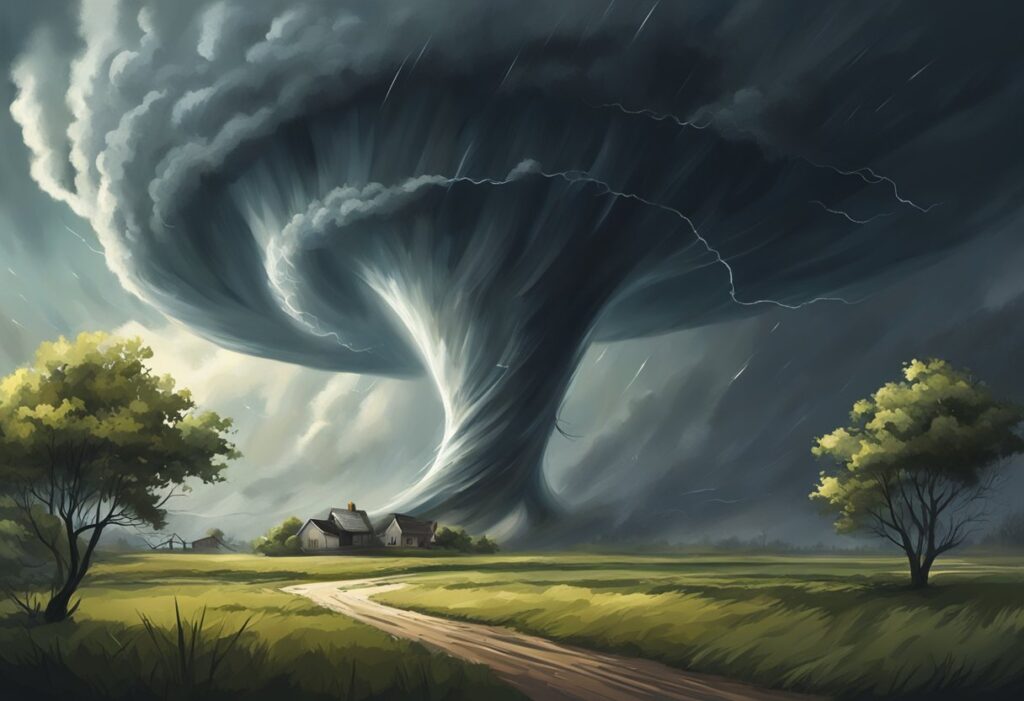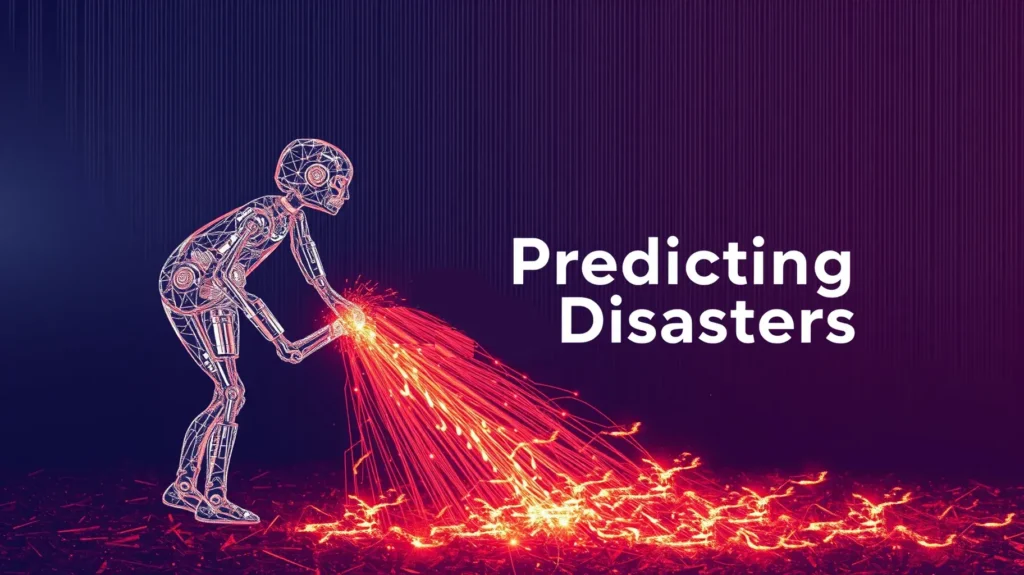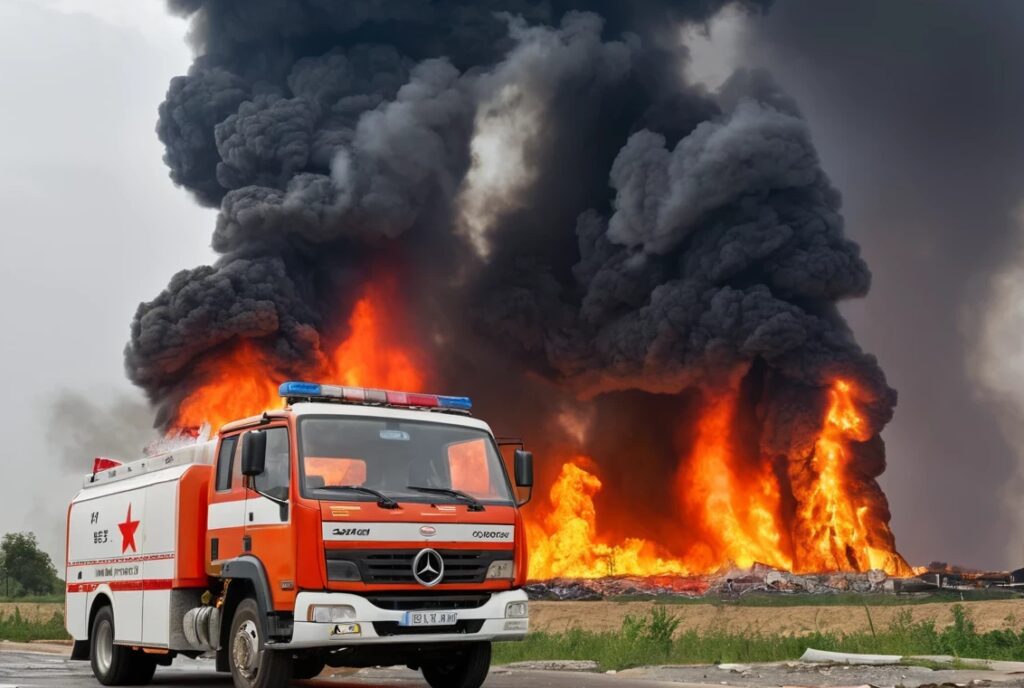
How Autonomous Systems Revolutionize Crisis Management
Disasters strike with little warning, bringing chaos, disruption, and often, destruction. Traditional response methods rely heavily on human coordination, which can be limited in scope and speed.
Enter Multi-Agent AI—a powerful technology that can optimize and even transform disaster response. By simulating human teamwork and decision-making, these AI systems enhance the speed and effectiveness of crisis management, saving lives and resources.
Understanding Multi-Agent AI: A Brief Overview
What is Multi-Agent AI? Multi-Agent AI involves a network of autonomous AI agents—software systems designed to perform tasks independently or in collaboration with other agents. Each agent acts like a specialized worker within a larger team, performing distinct functions such as information gathering, decision-making, or resource allocation.
Key Features of Multi-Agent AI Systems
- Autonomy: Agents can operate independently, making decisions based on real-time data without constant human input.
- Collaboration: Agents communicate and coordinate with each other, much like human team members.
- Scalability: Multi-agent systems can expand or contract based on needs, making them flexible in fluctuating disaster scenarios.
With these capabilities, multi-agent systems bring new opportunities for managing disaster-related tasks with precision and speed, overcoming limitations inherent in human-only response teams.
Enhancing Situational Awareness with Multi-Agent AI

Data Gathering and Analysis
During a disaster, gathering data quickly is crucial. Multi-Agent AI leverages drones, IoT devices, and sensor-equipped vehicles to collect vast amounts of real-time information. Each agent within the system is tasked with gathering data in specific areas, such as temperature, humidity, or structural stability, to provide a comprehensive picture of the situation.
Processing Real-Time Data for Insights
AI agents don’t just collect data—they process it. By leveraging machine learning and data analytics, these systems rapidly filter out noise and prioritize actionable insights. This allows response teams to detect and respond to evolving dangers, from spreading fires to structural collapses.
Visual Mapping and Tracking
Agents can generate visual maps showing heat maps of affected areas, pinpointing critical zones in need of immediate attention. By dynamically updating these maps, AI helps human responders visualize the disaster in real-time, ensuring resources are directed to areas that need them the most.
Coordinating Resources: Logistics and Deployment
Smart Resource Allocation In any disaster, resources are limited. Multi-agent systems excel at allocating resources—such as medical supplies, rescue personnel, and transportation—based on real-time needs. Each AI agent can monitor a specific resource, deciding when and where it’s most urgently required.
Dynamic Route Planning for Emergency Vehicles
Navigating through blocked roads and damaged infrastructure is challenging. Multi-Agent AI can coordinate to plan optimal routes, bypassing obstacles to reach victims faster. If an agent detects a new roadblock, the system immediately recalculates alternative routes, improving response times and reducing delays.
Communication with Human Teams
For coordinated response, AI agents share real-time data with human responders through apps, alerts, and dashboards. This means responders are always informed, adapting quickly to changing situations as they unfold.
Assisting with Evacuations and Crowd Management

Guiding People to Safety
Crowd dynamics during a disaster can become chaotic, posing risks to both evacuees and responders. AI agents monitor crowd movement patterns, guiding individuals toward safe zones. This is particularly useful in urban environments where clear evacuation paths may not be immediately obvious.
Predictive Analytics for Evacuation
With access to real-time data, Multi-Agent AI uses predictive models to forecast where bottlenecks might occur during evacuations. This proactive approach helps streamline large-scale evacuations, reducing panic and improving safety for those affected.
Communication with the Public
Agents can also communicate with the public via social media, SMS, and local apps, sharing critical evacuation routes, shelter locations, and real-time updates. By providing timely information, these systems reduce confusion, helping people stay safe and make informed decisions.
Search and Rescue: Real-Time Tracking and Autonomous Assistance
Enhanced Search Capabilities
During disaster recovery, locating survivors trapped in rubble or isolated in inaccessible areas is often the top priority. Multi-Agent AI systems employ drones, robots, and other autonomous devices to scan affected areas. Each agent works within its designated region, covering more ground than human teams could alone.
Precision Tracking and Identification
Equipped with thermal imaging and audio sensors, AI agents can detect human presence even through thick smoke or beneath debris. By triangulating survivor locations based on signals received by multiple agents, responders gain precise location data, making rescues faster and safer.
Autonomous Rescue Operations
In extreme conditions, such as collapsed buildings or wildfire zones, autonomous agents like robotic drones can reach places unsafe for humans. These drones deliver essentials—like water or medical supplies—to isolated survivors, buying time until human teams can arrive.
Decision Support for Crisis Leaders

Data-Driven Decision-Making
AI agents not only process data but synthesize it to provide actionable insights for decision-makers. Leaders overseeing disaster response are often inundated with information; multi-agent systems filter and prioritize this data, highlighting key issues like supply shortages or emergent risks.
Risk Assessment and Priority Setting
Each AI agent is trained to assess risk levels based on its specific focus area—whether that’s monitoring fire spread or evaluating structural integrity. By collectively analyzing risks, multi-agent systems provide priority recommendations, helping decision-makers address the most pressing issues first.
Simulations for Future Scenarios
One standout feature is the ability to run simulations. Based on historical data and current conditions, Multi-Agent AI can predict the potential outcomes of different response actions. For instance, it can simulate the effects of re-routing supplies or deploying teams to different areas, enabling leaders to make informed choices.
Supporting Relief Efforts and Long-Term Recovery
Streamlining Aid Distribution
Disaster relief involves complex logistics, from food distribution to housing. Multi-agent systems optimize these processes by coordinating supply chains, predicting demand, and allocating resources. This ensures communities receive aid faster and more effectively, preventing shortages and wastage.
Managing Volunteer and Staff Efforts
Volunteers play a vital role in disaster relief, but managing large teams can be challenging. Multi-Agent AI systems can track volunteer activities, match skills to tasks, and ensure efficient use of human resources. This coordination means each volunteer can contribute to the maximum, amplifying the impact of relief efforts.
Post-Disaster Recovery and Analysis
Once the immediate response concludes, AI agents assist in assessing the disaster’s impact, tracking recovery progress, and identifying areas for improvement. By analyzing data collected during the crisis, multi-agent systems offer valuable insights, helping communities rebuild and reinforcing strategies for future resilience.
Looking Forward: The Future of Multi-Agent AI in Disaster Response

Incorporating Machine Learning for Continuous Improvement
As multi-agent systems evolve, they’ll continue to integrate machine learning, becoming even more effective over time. By learning from each disaster, these AI agents refine their responses, adapting to new environments, threat types, and logistical challenges.
Expanding Human-AI Collaboration
Future advancements in Multi-Agent AI will likely emphasize human-AI collaboration, ensuring AI systems are as responsive to human needs as possible. Enhanced interfaces and training for human responders will allow both sides to work together seamlessly.
Embracing Ethical and Security Considerations
As multi-agent AI becomes central to disaster response, addressing ethical concerns around privacy, data security, and decision accountability will be essential. Establishing guidelines for AI’s role and transparency in its decision-making processes will help ensure safe and trusted deployment.
Multi-agent AI in disaster response is still advancing, but its potential to reshape crisis management is clear. From streamlining logistics to supporting search-and-rescue, these autonomous systems empower responders to act swiftly, precisely, and effectively—even under the most challenging conditions.
Real-World Applications: Case Studies of Multi-Agent AI in Disaster Response
Hurricane Relief in the Caribbean
In recent hurricane seasons, multi-agent systems have been tested in the Caribbean to assist in relief logistics. By coordinating supply routes and aiding in evacuation plans, these AI agents improved response times, helped manage resources, and ensured that aid reached hard-hit areas more efficiently.
Wildfire Management in California
Multi-Agent AI has also been pivotal in California’s wildfire response. By coordinating firefighting resources and monitoring environmental conditions, these systems have enabled more effective fire containment strategies. The use of drones and ground-based robots has made it safer to fight fires in high-risk zones.
Earthquake Response in Japan
Japan’s seismic activity presents unique challenges, but multi-agent systems have supported post-earthquake recovery efforts by providing structural assessments of buildings and coordinating search-and-rescue operations. By mapping affected areas quickly, agents have helped local teams prioritize rescues and resource deployment.
Preparing for the Next Generation of Disaster Response

Advancing AI Training for Enhanced Adaptability
As disaster response scenarios grow more complex, AI systems must evolve. Multi-Agent AI could soon incorporate contextual learning, where agents learn and adapt based on new environments, rather than operating solely within predefined parameters. This makes agents more effective in unforeseen crisis situations.
Leveraging Blockchain for Transparency
Blockchain technology could play a role in enhancing data transparency within multi-agent systems. By recording decision-making processes on an immutable ledger, blockchain ensures accountability and transparency, which is crucial when autonomous systems manage life-saving operations.
Empowering Communities Through AI-Driven Awareness
Finally, as multi-agent systems advance, their benefits should extend beyond government and organizational use. Providing communities with AI-driven educational tools on disaster preparedness and response can empower civilians, making them proactive participants in resilience-building efforts.
Conclusion
Multi-Agent AI in disaster response is transforming the way we tackle crises. Through real-time data gathering, predictive insights, and resource allocation, these AI systems enhance human abilities to save lives and mitigate damage. As this technology evolves, addressing ethical, cost, and technical challenges will be essential to ensure safe and equitable access for all. Embracing Multi-Agent AI not only prepares us for today’s disasters but also paves the way for a resilient future, where global communities are better equipped to face whatever challenges lie ahead.
FAQs
How does Multi-Agent AI differ from single-agent AI?
Multi-Agent AI involves multiple autonomous agents working together, each assigned specific tasks within a shared goal. Unlike single-agent AI, which operates independently, multi-agent systems collaborate, communicate, and often make real-time decisions collectively. This teamwork makes them especially useful for complex, dynamic situations like disaster response, where multiple factors must be managed simultaneously.
What are some examples of Multi-Agent AI in action?
Multi-Agent AI is used in various disaster scenarios. For instance, drones equipped with sensors can scan affected areas after a natural disaster, while ground-based robots assess building stability. In recent wildfires, multi-agent systems helped coordinate fire containment efforts, and during hurricanes, they managed logistics to ensure supplies reached the most impacted areas efficiently.
How does Multi-Agent AI improve disaster response times?
By using autonomous agents to handle specific tasks like data collection, resource allocation, and route planning, Multi-Agent AI speeds up response times significantly. Each agent operates in real-time, monitoring conditions, making decisions, and immediately sharing critical information with other agents and human teams. This rapid data flow ensures a faster, more organized response during crises.
Are there any ethical concerns with using AI in disaster response?
Yes, privacy, data security, and accountability are major concerns. Multi-Agent AI systems may need to gather data on affected populations, raising privacy issues. Additionally, as these systems make autonomous decisions, clear guidelines must be in place to ensure accountability and ethical use. Transparency in data collection and decision-making is essential to address these ethical considerations.
Can Multi-Agent AI operate without human intervention?
While Multi-Agent AI systems are designed to be highly autonomous, human oversight remains critical, especially in disaster scenarios where unpredictable events can occur. Humans play a vital role in monitoring these systems, ensuring they operate within ethical and legal boundaries, and making complex decisions when needed.
How accessible is this technology for low-income regions?
Multi-Agent AI systems can be cost-prohibitive, which limits accessibility in low-income regions. However, partnerships with global organizations, government grants, and the development of open-source AI solutions are helping to bridge this gap, making it possible for more areas to benefit from the technology.
What role do machine learning and predictive analytics play in Multi-Agent AI?
Machine learning and predictive analytics enable Multi-Agent AI systems to analyze patterns and forecast events based on historical and real-time data. This is invaluable in disaster response, as it allows agents to anticipate possible dangers, allocate resources effectively, and improve evacuation and response strategies.
How might Multi-Agent AI evolve in future disaster response?
The future of Multi-Agent AI includes enhanced human-AI collaboration, contextual learning, and greater adaptability. AI agents may become more autonomous, capable of adapting to unforeseen challenges. Additionally, ethical safeguards, transparency through blockchain, and community education will likely play a larger role, helping these systems become an integral part of global disaster preparedness.
How do multi-agent systems communicate and coordinate during a disaster?
Multi-agent systems use real-time communication protocols that allow them to share data and instructions instantly. Each agent can report its findings, whether it’s a blocked route or a new survivor location, to other agents within the network. This shared communication helps agents coordinate tasks efficiently, like rerouting resources, adjusting search zones, or prioritizing areas needing urgent attention.
What types of agents are typically used in a disaster response multi-agent system?
In disaster response, multi-agent systems often include a variety of autonomous agents such as drones for aerial reconnaissance, ground robots for debris clearance, and software agents for data processing. Each type of agent is designed for specific tasks, such as mapping, monitoring environmental conditions, or analyzing data, which collectively provide a comprehensive response.
How is data processed in a multi-agent AI system?
Multi-agent systems process data by distributing it among different agents according to their functions. Some agents may analyze images from drone footage, while others evaluate environmental sensor data. This decentralized approach enables faster data analysis, as each agent focuses on specific data streams, ultimately improving the speed and accuracy of insights provided to human responders.
How can Multi-Agent AI help with post-disaster recovery?
After the initial response, multi-agent systems can continue supporting recovery efforts by monitoring infrastructure, tracking supply needs, and coordinating rebuilding projects. These agents help assess which areas have the greatest need for resources, ensure aid is distributed equitably, and analyze recovery progress to identify ongoing risks or improvements.
What are the limitations of Multi-Agent AI in disaster response?
Although effective, multi-agent systems face limitations, including connectivity issues in remote areas, reliance on power sources, and environmental challenges like extreme weather. These systems also depend on accurate, real-time data, which can be compromised by damaged infrastructure. Overcoming these challenges will require advancements in technology and collaboration with local response teams.
How can AI improve crowd management during evacuations?
AI agents monitor crowd movement and density in real-time, identifying potential bottlenecks and guiding people toward safer evacuation routes. By predicting where congestion may occur, Multi-Agent AI helps prevent panic and reduces risks associated with large-scale evacuations. This predictive crowd management is especially useful in densely populated areas where quick movement is essential.
Are there any security risks with using Multi-Agent AI in disaster response?
Yes, cybersecurity risks are a significant consideration. If hackers compromise an AI agent or the system’s network, they could disrupt response efforts or manipulate data. Implementing strong security measures, such as encryption and regular security audits, is essential to protect multi-agent systems from unauthorized access and maintain their integrity in crisis situations.
Can Multi-Agent AI systems learn from past disaster events?
Absolutely. By using historical data and machine learning, these systems can continuously improve. AI agents can analyze past disasters to learn about common challenges and effective response strategies, enabling them to make more informed decisions in future crises. This learning capability allows multi-agent systems to evolve, becoming increasingly effective with each deployment.
Resources
Organizations and Research Institutes
- Center for Humanitarian AI
Visit the website for resources and publications: Center for Humanitarian AI - FEMA’s Disaster Information and AI Resource Hub
FEMA resource hub for disaster AI applications: FEMA AI Resource Hub - United Nations Office for Disaster Risk Reduction (UNDRR)
Explore reports and resources: UNDRR





